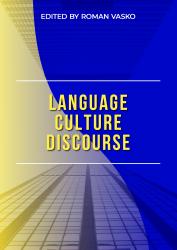Lexico-semantic graphs as formalized schemes of reflection of fragment of reality in human consciousness
Keywords:
Language, culture, discourse, cognitive-discursive approach, complex synergistic continuumAbstract
This chapter formulates the main theoretical principles for the study of lexico-semantic field (LSF) and the principles of its construction. The feasibility of applying a formalized approach to the schematic representation of the structure of LSF in the form of lexico-semantic graph has been argued. Three stages of construction of a lexico-semantic graph with two vertices are characterized: PANDEMIC and PLAGUE. At the first stage, the semantic structure of the token pandemic in different explanatory dictionaries of the Ukrainian language is presented with the help of definitive analysis, synonyms for this keyword are selected and their semantic volume is determined. Based on the results of this procedure, a matrix of quantitative and qualitative indicators of a synonymous set of tokens of the keyword pandemic and its LSF was constructed, which turned out to be dual-core in its structure. The second stage involved the application of the method of component analysis with the determination of the seed composition of the lexical meanings of the keyword and its synonyms, the results of which are reflected in another matrix. The third stage of the research is to construct a model of the LSF graph with the vertices of pandemic and plague. The developed methodical algorithm allows to visually formalize the structure of LSF and the relationship between its core and periphery, as well as to measure the degree of semantic density of LSF elements.

LANGUAGE. CULTURE. DISCOURSE
Downloads
Pages
Published
Categories
License

This work is licensed under a Creative Commons Attribution-NonCommercial-NoDerivatives 4.0 International License.

